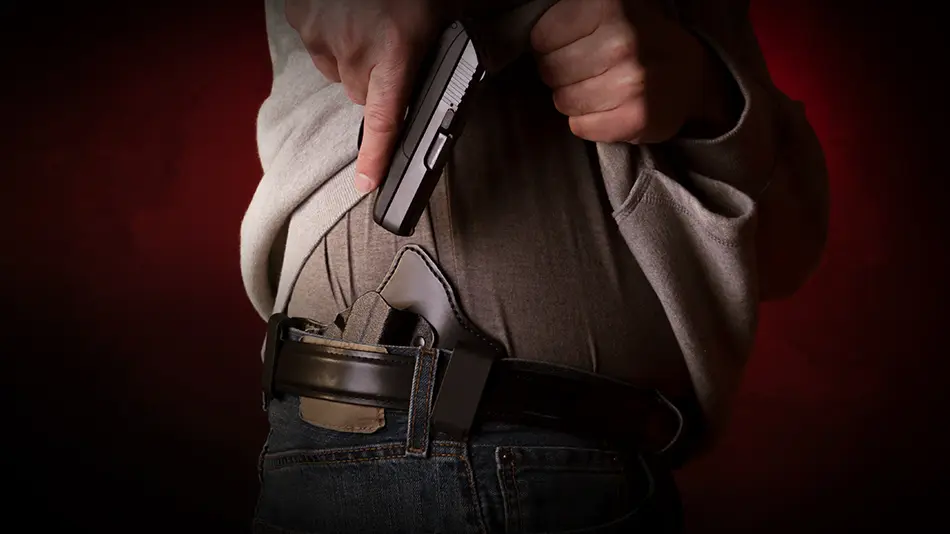Depending on your location where you draw your weapon, you will be treated differently by the legal system.
When confronted by an intruder in your “castle,” you are presumed to have held a reasonable fear of imminent peril, death, or great bodily harm to yourself or another when using defensive force that is intended or likely to cause death or great bodily harm. This means you can defend yourself or anyone else from an intruder by using deadly force.
The law offers immunity from prosecution when an intruder breaks into your occupied castle and you are forced to use deadly force to defend yourself. If you are in your backyard or driveway (outside of your “castle”), you don’t get the same “castle” protections.
What is the “Castle Doctrine?”
Oklahoma has adopted the Castle Doctrine, which is derived from an English common law rule. It recognizes that Oklahoma citizens have a right to expect absolute safety within their homes or places of business. The term “Castle Doctrine” does not appear in the Oklahoma statutes; however, the legal concept comes from the philosophy that every person is the king or queen of his or her castle. As such, no king or queen is required to retreat before using force or deadly force against an intruder in the castle.
To summarize, the Castle Doctrine does not require a duty to retreat from the home. This means if you confront a home intruder in your home or “castle,” you can either retreat or stand and fight.
In order to make complete sense, the Castle Doctrine needs a little discussion.
What is a “Castle”
According to Okla. Stat. tit. 21 § 1289.25, there are many places where a person has the absolute right to safety, such as their home, their dwelling, their temporary residence, or a place they are visiting as an invited guest (such as a motel or similar guest locations, including a tent). The location must be designed to be occupied by people. The castle does not include: a separate garage where the car is parked, pole barns, or storage sheds unless they are designed for human occupation.
A “business location” includes many places where business is conducted, such as at a place of worship. A place of worship is defined as any permanent building, structure, facility or office space owned, leased, rented, or borrowed, on a full-time basis, when used for worship services, activities, and business of the congregation, which may include, but not be limited to, churches, temples, synagogues, and mosques.
“Vehicle” means a conveyance of any kind, whether or not motorized, which is designed to transport people or property. An occupied vehicle may include any mode of transportation such as a car, motorcycle, bicycle, wagon, trailer, or tractor. The vehicle does not need to be a motor vehicle either registered or licensed to operate on public roads. There is no requirement that the vehicle be self-propelled.
What Are the Limits of a “Castle?”
The castle includes an occupied home, business, place of worship, structure designed for occupation, and vehicle. The adjacent yard, lands or enclosure of land, business, or place of worship are not included in the castle. A tent pitched in a field is a castle, but the surrounding field is not the castle.
Can I Claim a “Castle” While on Vacation?
In Oklahoma, any temporary structure designed to be used for occupation by people may be claimed as a castle. Any occupied vehicle while parked may be claimed as a castle. An RV or trailer, while parked, is a castle and while underway is not, because the RV is not designed for occupation while underway. A motorhome RV is designed to be occupied while underway, thus it is a castle while underway.
Can I Claim a “Castle” While Running Errands?
An occupied vehicle may be claimed as a castle while being operated or parked for the purpose of driving, sleeping, running errands, vacationing, or transportation for an unnamed legal purpose.
For any question regarding what constitutes a “castle” in Oklahoma, contact U.S. LawShield and ask to speak to your Independent Program Attorney.
The preceding should not be construed as legal advice nor the creation of an attorney-client relationship. This is not an endorsement or solicitation for any service. Your situation may be different, so please contact your attorney regarding your specific circumstances. Because the laws, judges, juries, and prosecutors vary from location to location, similar or even identical facts and circumstances to those described in this presentation may result in significantly different legal outcomes. This presentation is by no means a guarantee or promise of any particular legal outcome, positive, negative, or otherwise.





Leave A Comment